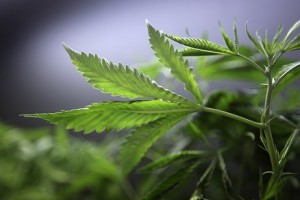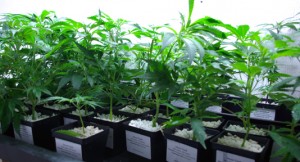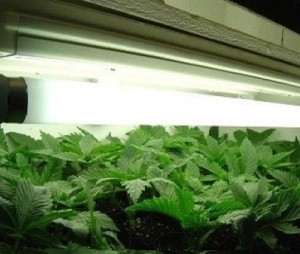After the cannabis seed germination period, which will last for about two (2) to three (3) weeks, the seed then enters the seedling growth stage. After the seed has developed a strong root system and foliage begins to grow rapidly, the seedling has entered into its vegetative growth stage.
At this point in the plants’ life, their chlorophyll production is at its peak and full speed. When their chlorophyll production is at full speed, the cannabis plants will begin to develop lush foliage and rapidly grows as long as they have their requirements:
Cannabis plants that are properly taken care of will usually grow around 1/2 – 2 inches a day under optimal conditions. The keys to having a strong, healthy, and high-yielding crop will be contributed to these things:
- The plant has enough room to grow and flourish, without being constricted
- Having the plant in an environment that will allow it to thrive
- Providing the plant with all of the basic nutrients that it requires
Such nutrients for vegetative growth include high levels of:
Cannabis Plants Vegetative Lighting Requirements

To keep cannabis plants within a vegetative state they will need a minimum of 16 hours of light. If you like to push your cannabis plants to the limit then you can give them 24 hours of light a day and they will grow faster than with 16 hours.
Keep in mind that artificial light diminishes exponentially the further away they are. Therefore, if the foliage is four (4) feet away from the bulb, it receives only one-fourteenth (1/14) as much light as if the foliage was only one (1) foot away from the bulb.
Cannabis plants are photoperiodic-reactive where the plant flowering is and can be controlled by the hours of light in the day and night cycles. Having plants that you can control through lighting cycles allows indoor horticulturists to grow indoors and control the stages of growth in a cannabis plant.
With the changing of light cycles, it is capable of controlling the vegetative state of a plant, the blooming state of a plant, and also being able to rejuvenate a plant, by changing it from a blooming state back into a vegetative state for cloning.
Cannabis plants propagate early male or female ‘pre-flowers’ into about the fourth (4th) week of vegetative growth. Cloning, transplanting, pruning, and bending can all be done during this vegetative stage of the plant’s life to prepare it for the blooming stage.
Cannabis Clones And Cloning

Marijuana is a plant that can reproduce (propagate) either sexually or asexually. The natural process of propagation for cannabis plants is for the female flowers to be pollinated by male pollen that is carried by the wind.
In this process, the female flowers will develop seeds through sexual propagation. A clone or cutting from a marijuana plant is the result of asexual or vegetative propagation.
This is done by taking a cutting or clone from a cannabis plant. Here you will cut the tip of a growing vegetative branch tip and root it to create another plant, genetically identical to the plant the clone was taken from.
Most very productive growers use cloning methods to reduce the amount of time that it takes for a crop to grow to size and maturity. Many growers have multiple rooms for their growing area.
They will have room to do all cannabis cloning and vegetative growth, which is a quarter (1/4) of the size of their main blooming/flowering room. They move the vegetative plants into the room for flowering, keeping the light spectrum, light hours, and environment different within each room.
Having a growing area that has two (2) rooms, one (1) for vegetative growth and one (1) for flowering, you can combine this setup with an eight (8) week flowering plant. You will have a continuous cycle of production in cloning from vegging to flowering to form a perpetual harvest.
Let us know what you think.



 Light
Light